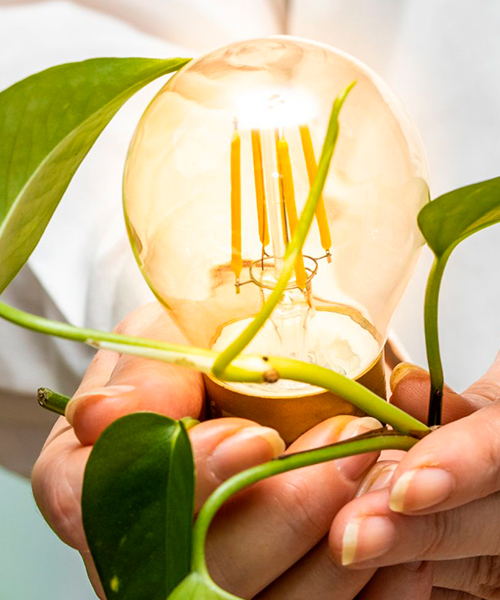
Biomass from vineyards and forests for renewable energy generation
Biomass from vineyards and forests for renewable energy generation
Vine pruning and forest management are two of the agroforestry activities that offer the greatest potential for energy production.


Vine shoots and vines for electricity production
Grapevines are one of the crops that takes up most of the land in Spain, with nearly one million hectares of vineyards spread throughout all the autonomous communities. Nearly half of them are in Castilla-La Mancha, where Agustín Nieto's company, Grúas Nilo, operates , which collects the vine shoots and vines that are uprooted every year to regenerate the vineyards and take them to a plant that generates electricity from biomass in Puertollano.
The farmers gather this biomass waste on the roadside and the operators from this company are in charge of removing it at no cost. The vines and vine shoots are taken to a collection point, which is usually four or five kilometers away, so that the operation “is more productive and, that way, we travel fewer kilometers for each load,” says Nieto. This is a logistical exercise, which is the first challenge posed by the use of biomass, a resource that is highly dispersed.
Grúas Nilo has been collecting vine shoots and vines for three years for a power plant that generates electricity from biomass, some 30,000 tonnes per year
Grúas Nilo has been collecting biomass for this power plant for three years, some 30,000 tonnes per year, 80% of which are uprooted vines and 20% of which are vine shoots. In addition, it has between 7 and 8 permanent employees and when, after the harvest, the pruning is done and the collection process begins, it is supplemented by machinists and truck drivers to double its workforce. Although their base is in Socuéllamos, they travel to all the towns in the province of Ciudad Real, “but we don't go to just one plot. Today, for example, we are in Villarrubia de los Ojos”, a town located nearly 100 kilometers from Socuéllamos, ‘to collect the vines from 15 plots".
Biomass recovery also frees farmers of a burden: “right now in Villarrubia de los Ojos they are waiting for us as if we were the May rains, because the pruning waste must be removed and if we do not collect it, they have to obtain authorization to burn it, the vines burn poorly... We leave them a clean plot, and if this waste is used to generate electricity and reduce pollution... what more could we ask for? For Nieto, with biomass “things are being done, but more can be done because there are not enough companies like ours to collect all the vine shoots and vines, which would be ideal”.
Forest biomass to produce steam for industrial purposes
One of the sectors that can play a key role in the development of the biomass sector is forestry. Every year in Spain thousands of hectares of forest are cleared, firebreaks are made, and tracks are maintained to prevent fires and to facilitate rapid action. The result is an enormous volume of trunks, branches, and leaves that can be used as biomass to generate renewable energy.
Enso offers thermo-intensive industries to replace natural gas with biomass and thus decarbonize the production of steam used in their processes
“It is a biomass that we categorize as residual, because if it were not used by the biomass sector it would have no use. It represents a problem and a cost for the administration and the forestry industry, which, thanks to its recovery, can be used while also generating a stimulus for sustainable forest management,” says Aitor Rentería, director of Biomass Supply at Enso, an energy services company that offers thermo-intensive industries, such as the food, petrochemical, paper, and pharmaceutical industries, a way to replace natural gas with biomass and thus decarbonize the production of the steam they use in their processes. With nearly a dozen projects on the Iberian Peninsula, Enso builds and operates its own plants alongside its customers' factories to provide this service.

The company uses both forestry and agricultural biomass to generate energy. In the plant it is building next to the ACOR sugar mill in Olmedo (Valladolid), Enso will use biomass waste, including that from the mill's activities, to produce electricity and heat for the sugar beet production process, which is the largest biomass cogeneration project in Spain and represents an 80% reduction in CO2 emissions. At its plant for Don Simón in Villanueva de los Castillejos (Huelva), the fuel used is chipped forest waste, mainly conifers, together with batches of eucalyptus and fruit trees, such as the orange trees that the company grows nearby to produce its juices.
In order for the industrial use of biomass to reduce greenhouse gas (GHG) emissions by at least 80%, as established by the EU's new Renewable Energy Directive (RED III), “our entire value chain is traceable and subject to a certification process,” continues Rentería. This emissions control mainly limits the distance from where the biomass can be transported, which must be a local resource.
In addition to the logistics of transporting it, another of the fundamental challenges posed by biomass recovery is that its availability varies annually depending on the weather. The most powerful plants consume more than 100,000 tonnes of biomass per year and “they have to be designed and financed so that they can operate with a wide range of different types of biomass to guarantee supply. There is plenty of biomass, but the consequences of climate change that we are seeing in recent years (droughts, fires, torrential rains...) may mean that there will be more abundance of one type or another”, concludes Aitor Rentería.


